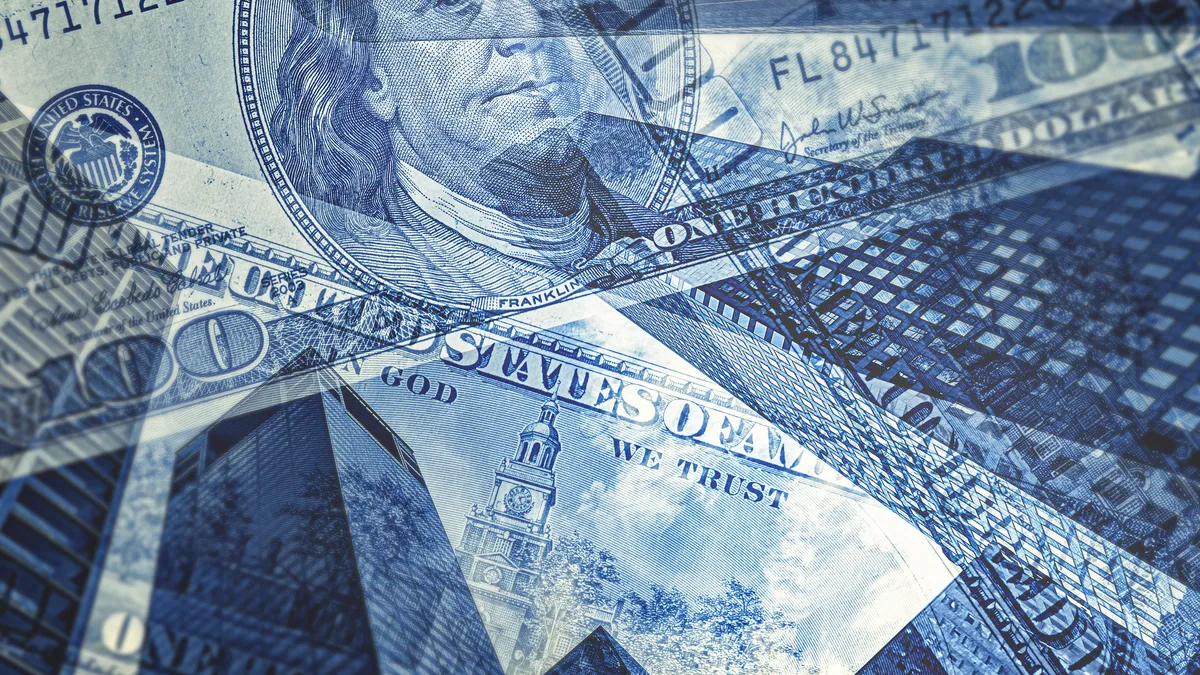Dive Brief:
- Nearly two out of five small business owners (37%) identify price pressures as their No. 1 challenge, highlighting that inflation anxiety has surged to the highest level since 1979, according to the National Federation of Independent Business (NFIB).
- The highest inflation in four decades is just one area of gloom creating an especially murky outlook for small businesses, NFIB said Tuesday. Business owners also confront the prospect of recession, COVID-19 disruptions and the risk of political turbulence.
- “The uncertainty in the small business sector is climbing again as owners continue to manage historic inflation, labor shortages and supply chain disruptions,” NFIB Chief Economist Bill Dunkelberg said in a statement describing a NFIB survey. Business owners face “a very uncertain future.”
Dive Insight:
The NFIB survey details many of the problems clouding the visibility of CFOs as they consider adjusting wages, prices and investment in the coming months.
For example, nearly half of small business owners (49%) said they could not fill job openings, reflecting how the 10.7 million job openings in June far exceeded the 5.9 million people looking for work. The unemployment rate fell last month to the pre-pandemic level of 3.5%.
Employees facing the highest inflation since 1981 are jumping ship at a near-record rate to seize on higher pay. The quits rate, or the number of workers who left their jobs as a percent of total employment, has wavered since June 2021 between 2.8% and 3%, the highest rate since 2000.
Forty-two percent of small businesses are seeking skilled workers, while 21% have openings for unskilled workers, NFIB said. Transportation, construction, manufacturing and wholesale businesses face the greatest difficulties in filling positions.
“Overall, the current level of openings is over 20 percentage points higher than the historical average,” NFIB said, noting that small businesses account for about 40% of U.S. employment and gross domestic product.
Business owners also continue to struggle with supply chain bottlenecks, with nearly one out of three (32%) saying such disruptions have had a significant operational impact and 36% reporting a moderate impact.
Finally, the proportion of business owners forecasting an increase in sales fell, signaling “a very bearish outlook,” NFIB said.
The pessimism on sales may reflect anxieties about a possible recession.
The economy — slowed by weakening manufacturing, cooling demand for housing and flagging spending by consumers and businesses — shrank 0.9% during the second quarter after slumping 1.9% during the first three months of 2022. A recession is commonly defined as at least two consecutive quarters of negative growth.
The survey revealed some bright spots: a smaller proportion of business owners reported raising average selling prices and they remain eager to hire, NFIB said.
“But everything else is down — capital spending plans, inventory investment plans, expected real sales way down, the environment for expanding negative — it doesn’t add up to an optimistic outlook,” NFIB said.












